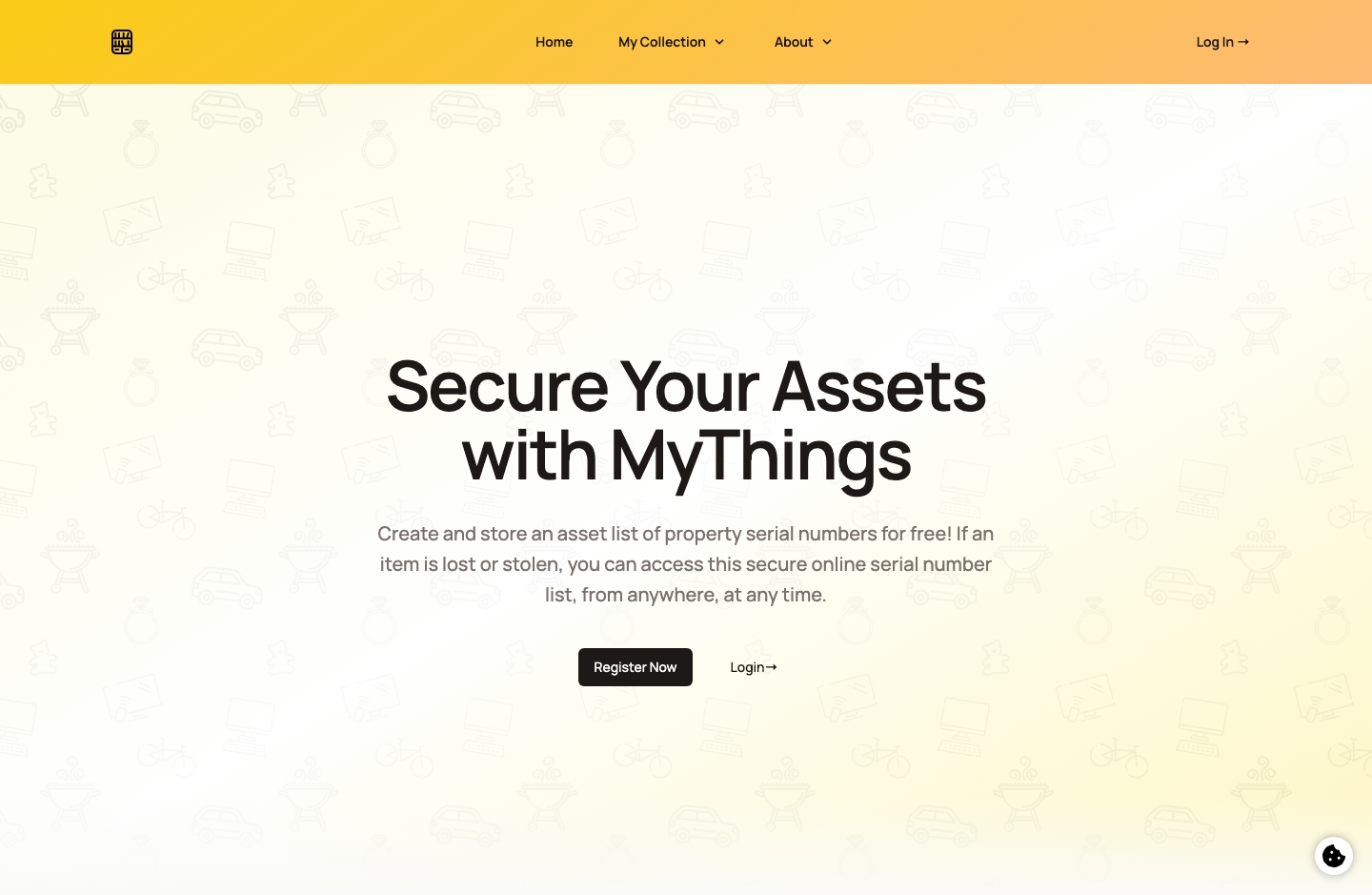Say Hello to MyThings
Back in December 2021, the New Zealand Police decommissioned the SNAP service, a platform that had allowed kiwi's to record serial numbers and identifying details of their valuable possessions. We were left without a reliable method to keep track of our assets.
Now you might say, why not take photos? Well if you're anything like me, we're all digital horders and trying to sift through a few thousand photos to find the one with a serial number is always going to be a challenge. Having a personal assets register of some kind was quite important to me as my partner and I had experience a burgulary a few years prior. If it unfortunatly happens again, we want to give ourselves the best chance of recovering our items and making it harder for those who traumatise the local community this way.
So after a nice summer holiday early 2022, I embarked on developing a drop-in replacement solution I called 'MyThings'. MyThings designed be the old SNAP service on steroids. SNAP would only store the absolute minimum about people's personal assets, and fair enough - a service that was built so long ago would have been expernsive to create and maintain. But since then, we've had a lot of technical advancements and a lot of them allow us to re-imagine the service without a high on-going cost of service. In-fact, I wanted MyThings to be able sustain itself so that people could use the service at no cost.
I started to think about what an imporoved user experience should look like. I knew it had to be:
- Just so simple.
- Quick to join, fast to use.
- and it should help the users capture the right information.
And so I pulled to gether something that looked pretty. But it lacked a functional, sustainable backend. MyThings was not ready, there was plenty I needed to learn before MyThings could go public.
Fast Forward ❯❯
Fast-forward a couple years, I my company TechType had pulled together a feat of engineering we call our Secure Platform Framework. A low-cost infrastructure design that gave us a great security and a low operating cost thanks to a serverless design. This gave me the oppertunity to finally create the backend that MyThings needed. The Techtype Reasearch & Development learnings had played a very big part in its design.
The most interesting challenge was answering the question
How do we balance service costs, income and usability, all while keeping everyone's personal data private?.
Using the lessons learnt from all the development we've been doing over the last coupe years, I already knew how to keep infrastructure and running costs down, and we've done a fantasic job of doing so already. But the commercial sustainability of the platform. Do we get users to pay? Do we have people sponsor the website? We had a lot of monitisation options but I wanted to go with a solution that was going to impact the user the least; keep it free for the day-to-day user to use; and keep the user's private data safe.
I have settled on a blend of non-intrusive adspace monetisation, and as the platform gets more use, the sale of anonamised and aggregated data that can be used for research. We may open up additional avenues as and when it's needed but our day-to-day users are always going to be the prioroity.
You can see the end result at mythings.co.nz

What's next for MyThings?
Right now, let kiwi's use it and give their feedback. Here's a few ideas that we've had already:
- Generate an item summary for the New Zealand Police.
- Generate a item report for Insurance providers.
- Allow retailers to auto-add new things to your account at the point of sale.
- Give users insights into their local communities.
There's just so many possibilities to what MyThings could be in the future, and I look forward to writing about it again.
Cheers,
Gage Keenan.